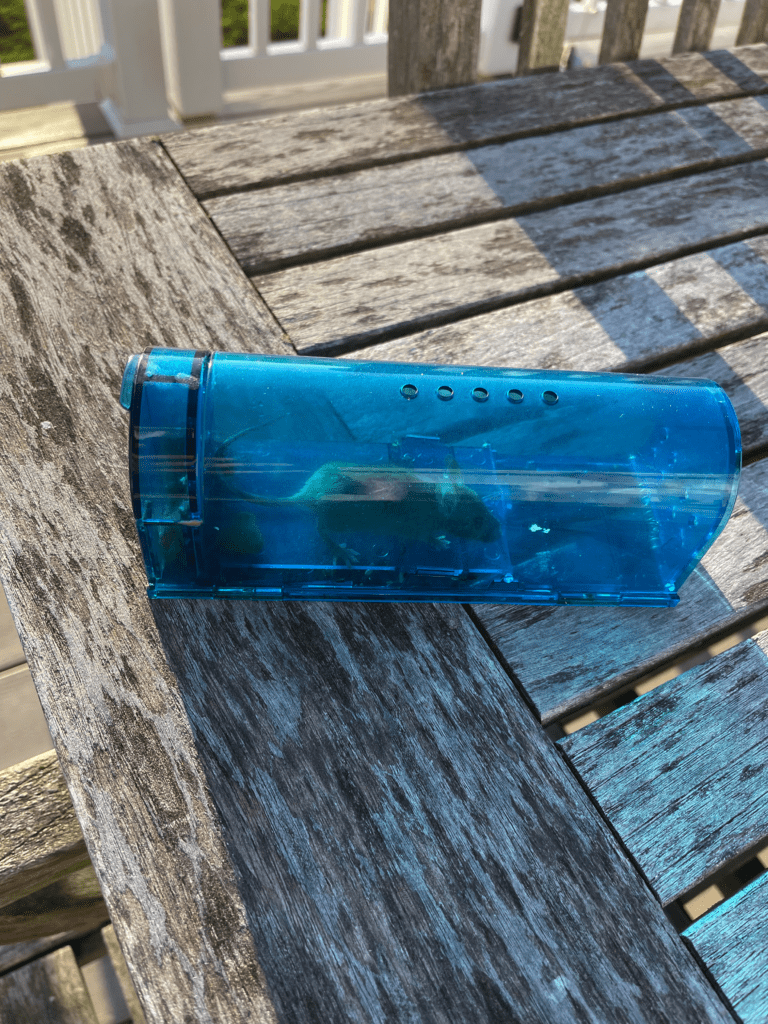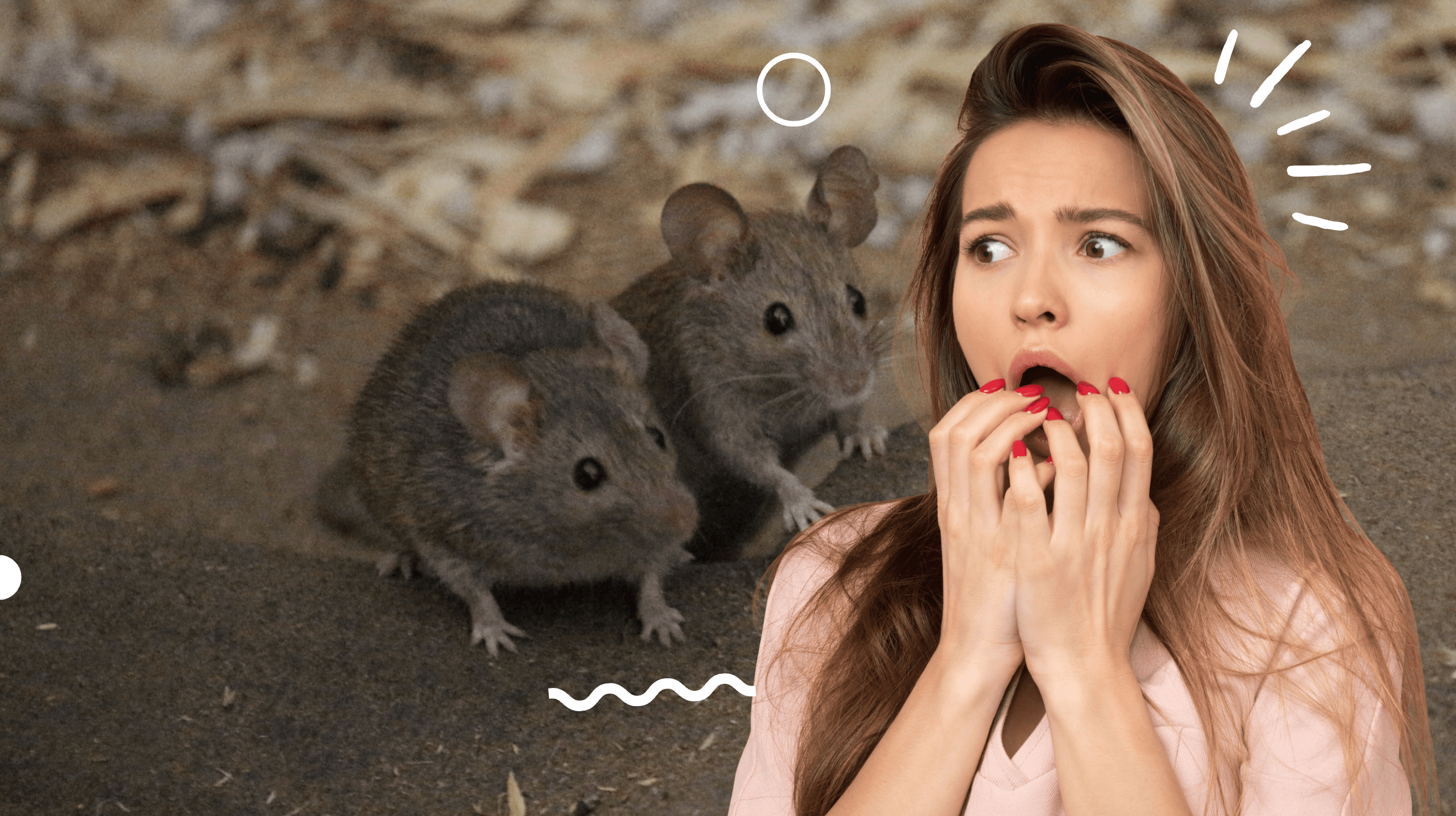A mouse in your house? Yikes! You see it zip across your kitchen or hear it rustling in your attic, and all you want is to get it out—fast! But here’s the kicker: How far should you take it before letting it go?
You might think, “Catch and release, easy-peasy!” But hold on, it’s not that simple. You’ve got to think about how mice behave, whether they’ll just scurry back home, and if they pose any health risks.
Plus, you want to be kind to the mouse while keeping your home safe.
So, let’s dive into this. How far should you take a mouse before releasing it? We’ll look at how mice behave, the health issues they can cause, and what the law and ethics say about it all.
Plus, we’ll give you some handy tips on catching and releasing mice. Ready? Let’s go!
? Please subscribe to our Youtube channel
Understanding Mice Behavior
Before we tackle how to properly release a mouse, let’s get to know these little critters better. This way, we can make smart, kind choices that keep both mice and our homes safe.
Mice’s Natural Habitats
Just like rats, mice are real survivors. They can make a home almost anywhere, from fields and forests to urban jungles. They’re fans of cozy, hidden spots like burrows, log nooks, or under rocks.
They also love human spaces—houses, sheds, garages. These places offer warmth, safety, and plenty of food.
Mice’s Homing Instincts
Ever heard of homing instincts? Mice have got ’em! They can find their way back home from up to two miles away.
This is all down to their keen sense of smell and a good memory of their surroundings. That’s why just moving them to the end of your garden probably won’t cut it.
Mice’s Survival Rates When Relocated
While relocating a mouse sounds kind, it’s not always the best for them. Studies show they don’t always survive the move.
They might not find enough food, or safe shelter. They could run into predators or have to fight other mice for resources. Even the stress of moving can take a toll on their health.
So, it turns out that catch and release isn’t as simple as it sounds. But don’t worry, we’re going to dig into the legal, and ethical stuff next, along with some practical tips.
Legal and Ethical Considerations

Dealing with a mouse isn’t just about understanding mouse behavior and risks. It’s also about knowing what’s legal and what’s right. Let’s break it down.
Understanding Local Laws About Wildlife Release
Before you go all ‘mouse-catcher,’ get the lowdown on your local wildlife release laws. They’re different everywhere and they’re there to protect animals and their habitats.
In some places, you can’t just release mice into the wild without a permit. They’re worried about disease spread and messing up local wildlife.
Not sure about your local rules? Give your local animal control or wildlife agency a shout.
Ethics of Relocating Mice
Moving mice is a tricky ethical puzzle. Sure, you need to protect your home and health. But mice are living beings too, deserving of kindness and respect.
We’ve already talked about how moving a mouse can lower its chances of survival. This begs the question: is it kinder to put the mouse to sleep or try to move it?
Also, think about what releasing a mouse might do to the local ecosystem. Adding a new critter could shake things up in ways we can’t predict.
So, when making your decision, think it through. The goal here is to minimize harm—to you and the mouse. Next up, we’ll talk about how to humanely catch a mouse, keeping in mind the legal and ethical stuff we’ve just discussed.
How Far Should You Release a Mouse?

So, you’ve nabbed a mouse, thought about the legal and ethical stuff, but here’s the big question: How far away should you release it?
Analysis of Research on Mice Homing Distances
Research on mouse GPS (aka homing) skills varies. Some studies say they can find their way back from two miles away.
It’s all down to their super-sniffer and a good memory of their surroundings. But remember, it’s not a hard rule.
It can depend on the mouse’s age, health, and how tricky the landscape is.
Recommended Distances and Why
Given mice’s homing chops, it’s best to release them at least two miles from your home, if not further. This is thought to be beyond their ‘homing range,’ making a return less likely.
But remember, dropping a mouse far away doesn’t mean it’ll survive or won’t cause problems in its new home. That’s why you’ve got to think about where you’re releasing it too. More on that next.
Factors Influencing the Ideal Distance
The ‘perfect’ release distance depends on a few things. The local landscape, for one. A mouse might struggle to find its way home through a maze-like city. In a simple rural setting, it might travel further.
The mouse’s age and health matter too. Younger, healthier mice might manage longer distances than older or sick ones.
Finally, other mouse populations can impact whether a mouse tries to return. If it finds a bustling mouse community with plenty of resources, it might decide to stay put.
So, remember, there’s no surefire solution here. The goal is to balance what works for your home with what’s kindest for the mouse.
Where Should You Release a Mouse?
So we’ve got the ‘how far.’ Now, let’s tackle the ‘where.’ The spot you choose can seriously affect the mouse’s survival and the local ecosystem.
Ideal Habitats for Releasing Mice
The best spot for a mouse is somewhere like its natural habitat. Think fields, forests, or grasslands with lots of cover and food. This boosts its chances of finding shelter and grub, helping it survive.
Before you let the mouse go, check out the area. Look out for danger like predators or busy roads. Also, keep an eye out for other mice. You don’t want to overcrowd the place or start a food fight.
Areas to Avoid
There are no-go zones for releasing mice. Near other houses or businesses is a big no. The mouse might just move into another building and start causing issues there.
Also, steer clear of agricultural areas. Mice can wreck crops and might run into pesticides or other nasties.
And remember, don’t release a mouse somewhere it could mess with local ecosystems, especially if you’re somewhere with sensitive or protected wildlife.
Weather and Time of Day Considerations
The ‘when’ matters too. Mice are night owls, so dusk is a good time to release them. It gives them a chance to find a safe spot and food under the cover of darkness.
Weather-wise, go for a dry, mild day. Too hot, too cold, or too wet can make it tough for the mouse to survive, especially in a new place.
Remember, catching and releasing a mouse is a big deal. You’ve got to think about the mouse, the local ecosystem, and people. If you’re not sure, ask a local wildlife or pest control pro.
Mastering the Gentle Art of Mouse Capture
So, there’s a mouse in your house, huh? Let’s talk about catching it, but doing it nicely. We’ll explore humane mouse traps, the safe and effective way to use them, and when to ring up the professionals.
The Lowdown on Humane Mouse Traps

Humane tracks are great because they catch our furry friends without hurting them. They usually come in clear plastic or metal and are pretty simple to use: you tempt the mouse in with food, then it gets trapped safely inside.
There are a few types out there like catch-and-release traps and multiple-catch traps. Bonus: They’re reusable!
Making the Most Out of Your Traps
Start by setting your trap along walls or where you’ve seen mouse action. Mice love sticking to room edges, so that’s your sweet spot.
Now, onto the bait. Peanut butter is a real winner – delicious and smells amazing to mice. Just remember, less is more. You don’t want them swiping the bait from outside.
Caught a mouse? Great! Make sure you’re checking the trap often though. It’s not nice to leave a mouse stuck in there for too long. When release time comes, recall our chat about the right distance and location.
We know because we have caught and released several mice in our house with the trap you see on the picture. But we have caught and released too many.
It is clear that we have an issue that could get out of hand. This is why I researched this topic to learn what we should do next.
When to Call in the Pros
If you’ve got more than just a mouse or two, or if trapping and releasing isn’t your cup of tea, it’s probably time to call professional help.
Pest control whizzes can sort out your problem efficiently, and many offer humane removal services. They can also give you tips to avoid future mouse gatecrashers.
To sum up, a mouse issue doesn’t mean inhumane harm has to come to the little critter. With these humane traps and some know-how, you can handle your mouse situation in a gentle and effective manner.
Other Ways to Deal with Mice
Catching and releasing isn’t your only option. If you’re struggling with a mouse problem like we are, or if releasing mice makes you uneasy, there are other ways to go about it.
Calling in the Pros
You might want to consider professional pest control services. They’ve got the skills and tools to tackle a mouse problem safely and effectively. They can also give you tips on how to keep mice away for good.
Many of these pros now offer humane removal services.
They aim to catch and relocate mice in a way that’s kind to the mice and keeps your home safe.
Natural Ways to Keep Mice at Bay
There are lots of natural ways to deter mice. Peppermint oil, for example, is often used as a mouse repellent. Mice hate the smell.
So, try soaking some cotton balls in peppermint oil and scattering them around your home. Other natural deterrents include eucalyptus or citronella essential oils, and even some spices like cayenne pepper or clove.
But remember, these aren’t 100% effective. They should be part of a bigger plan to keep mice at bay.
Make Your Home Mouse-Proof
The best way to tackle a mouse problem is to stop it before it starts. Make your home a no-go zone for mice. Keep it clean, especially where you store or prepare food.
Mice love food, so make sure it’s sealed and you clean up any crumbs.
Also, block any potential entrances like cracks or holes in walls, floors, and foundations. You’d be surprised how small a gap a mouse can squeeze through, so be thorough.
With these alternatives, you can find a way that works for you, is kind to the mice, and keeps your home cozy and mouse-free.
Conclusion
Dealing with a mouse at home isn’t as simple as it seems. Releasing it might sound nice, but you’ve got to consider their homing skills, survival post-relocation, legal and ethical stuff, and the local environment.
Distance-wise, aim for at least two miles, but it can vary. Choose a spot that feels like home to them, but avoid other houses, businesses, or fragile ecosystems.
And if relocating isn’t your cup of tea. You can get pros involved, use natural deterrents, or make your place less mouse-friendly.
The bottom line? Treat mice with respect. They might be uninvited, but they still deserve kindness.
By balancing our safety with their well-being, we can aim for a solution that works for everyone.


Thank you for your kind and humane respect for the wee mice. I know I have one little one it seems. The peppermint does help deter. Your article is kind, comprehensive and so helpful! Love those others who honor the creatures as I do, no matter size.